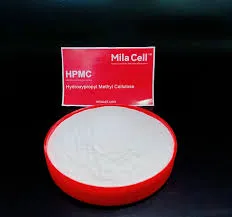
Dec . 03, 2024 16:49 Back to list
redispersible polymer powder manufacturing process
The Manufacturing Process of Redispersible Polymer Powder
Redispersible polymer powder (RDP) is an essential material widely used in various industries, such as construction, adhesives, and coatings. It is primarily derived from emulsions and plays a crucial role in enhancing the performance of dry mix mortars, improving adhesive properties, and providing flexibility in applications. This article outlines the manufacturing process of redispersible polymer powder, focusing on its formulation, drying techniques, and quality assurance.
Formulation
The manufacturing of redispersible polymer powder begins with the careful formulation of polymer emulsions. Polymers commonly used include vinyl acetate-ethylene (VAE), styrene-acrylic, and other copolymers. The selection of the polymer type depends on the specific application and required performance characteristics. During the formulation process, various additives, such as surfactants, stabilizers, and plasticizers, are introduced to improve the emulsion's stability and performance.
These components are blended in precise ratios, ensuring uniformity and efficiency. The resulting polymer emulsion is then subjected to emulsification, where the mixture is finely dispersed in water to create a stable emulsion. Advanced technologies, such as high-shear mixing and homogenization, are employed to ensure a consistent particle size distribution and avoid agglomeration.
Drying Techniques
After formulating the polymer emulsion, the next step in manufacturing RDP is the drying process
. The primary methods used for drying include spray drying and freeze-drying, each providing distinct advantages.1. Spray Drying This is the most common method for producing RDP. The emulsion is atomized into a hot air chamber, where the water rapidly evaporates, leaving behind fine polymer particles. The temperature and air flow are carefully controlled to prevent degradation of the polymer, ensuring high-quality powder. The result is a free-flowing, redispersible powder that can be easily rehydrated.
redispersible polymer powder manufacturing process

2. Freeze-Drying This method, although less common than spray drying, is utilized for sensitive polymers that may degrade under high temperatures. In freeze-drying, the emulsion is frozen, and then the water is removed under a vacuum at low temperatures. This process preserves the polymer's integrity and provides a high-quality end product, although it is generally more expensive and time-consuming than spray drying.
Quality Assurance
Quality assurance is a critical aspect of the manufacturing process for redispersible polymer powder. Multiple tests are conducted to ensure that the powder meets industry standards and end-user specifications. Key parameters evaluated include
- Particle Size Distribution Ensures consistency and performance characteristics. - Redispersibility Assessed by evaluating the powder's ability to return to its original emulsion form when mixed with water. - Viscosity Measured to determine the flow behavior of the dispersed polymer, which is vital for applications in construction and coatings.
Additionally, various physical and chemical tests, including thermal analysis and mechanical property evaluation, help ensure that the product meets the necessary durability and performance requirements.
Conclusion
In conclusion, the manufacturing process of redispersible polymer powder is a multifaceted operation that begins with careful formulation and ends with rigorous quality assurance. The choice of polymer, drying technique, and testing methods all play a crucial role in determining the final product's quality and performance. As industries continue to demand higher-performing materials, RDP remains a vital component in achieving enhanced adhesion, flexibility, and durability in a wide range of applications.
-
Versatile Hpmc Uses in Different Industries
NewsJun.19,2025
-
Redispersible Powder's Role in Enhancing Durability of Construction Products
NewsJun.19,2025
-
Hydroxyethyl Cellulose Applications Driving Green Industrial Processes
NewsJun.19,2025
-
Exploring Different Redispersible Polymer Powder
NewsJun.19,2025
-
Choosing the Right Mortar Bonding Agent
NewsJun.19,2025
-
Applications and Significance of China Hpmc in Modern Industries
NewsJun.19,2025







